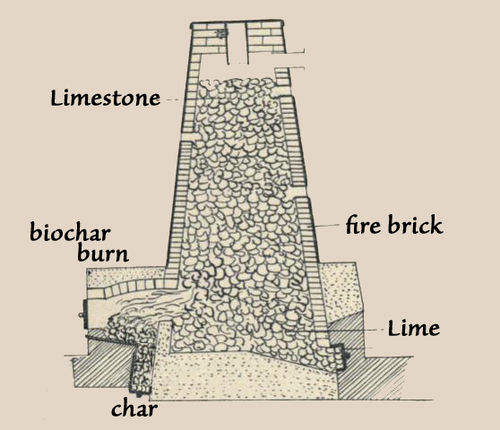Biochar-Lime Co-production System: Difference between revisions
Jump to navigation
Jump to search
(Created page with "Idea to couple the production of [biochar] with [lime] burning. The pyrolysis gas generated during char production is not flared off but used to make quicklime, which has many...") |
No edit summary |
||
| Line 1: | Line 1: | ||
Idea to couple the production of [biochar] with [lime] burning. The pyrolysis gas generated during char production is not flared off but used to make quicklime, which has many uses in construction and other areas. The process is carbon-negative. | [[File:Biochar_Lime_kiln_drawing.jpg|500px|thumb|right|Model of (continuous) biochar/lime co-production system. Limestone is added at the top. Wood or other biomass is charred at the bottom. The combusion of pyrolysis gas ("wood gas") from [biochar] production provides the heat that turns limestone into quicklime.]] | ||
Idea to couple the production of [biochar] with [lime] burning. The pyrolysis gas generated during char production is not flared off but used to make quicklime, which has many uses in construction and other areas. The process is carbon-negative. This type of production needs relatively close ('round the clock) monitoring but there is potential for automation. | |||
Revision as of 14:56, 25 February 2016
Idea to couple the production of [biochar] with [lime] burning. The pyrolysis gas generated during char production is not flared off but used to make quicklime, which has many uses in construction and other areas. The process is carbon-negative. This type of production needs relatively close ('round the clock) monitoring but there is potential for automation.
